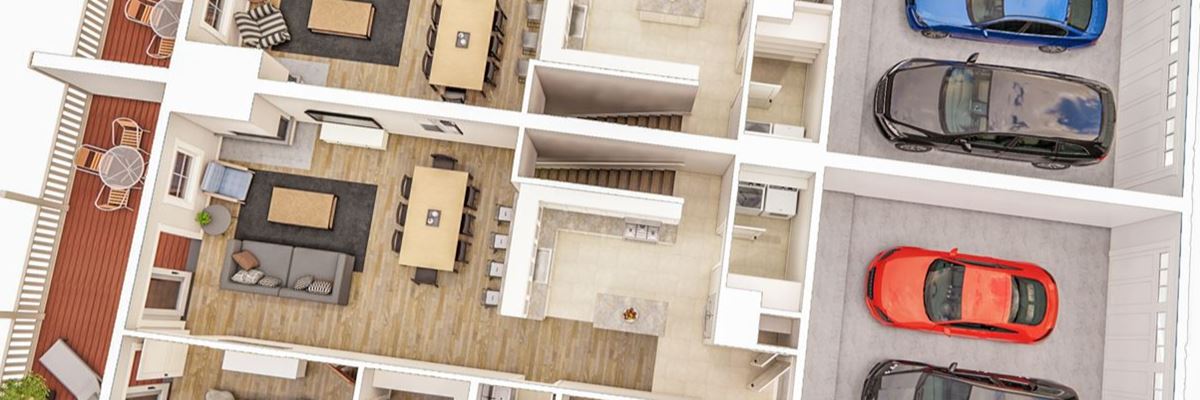Choosing incorrectly between 2D rendering vs 3D rendering is a decision that could cost you time and money in the long run. Each has its own advantages and disadvantages, depending on the needs of the project. In this blog post, we will discuss the differences between 2D and 3D rendering, and explain when each type is most appropriate.
What is 2D rendering and what are its uses
In disciplines like architecture, civil engineering, landscaping, and planning, 2D rendering is generally the practice of using a program like Photoshop to add color, texture, and shadows to a flat drawing. The colors are often more about identifying uses than they are about communicating realism.
Having an existing drawing is critical to creating a 2D rendering. The drawing is often a sketch, but it may also be computer-generated. When it is finished, the drawing is not usually intended to have depth. The drawing could be a site plan, a floor plan, or a building elevation. The 2D rendering is not intended to add realism, but to add interest.
In the past, these renderings were almost always done with markers, though sometimes watercolor paints were used to wash an image. In recent years, 2D rendering software has been used to add create a digital rendering. Hand rendering is not likely to go away, and it shouldn’t! It’s an incredible skill and can be a beautiful piece of art when it is complete.
The benefits of 3D rendering over 2D rendering
Speed
The strengths of 2D rendering are also its weaknesses. Creating art takes time. Time you don’t have. If this were your final marketing piece, that would be one thing. But if you are exploring concepts, you can’t commit that much time to an experiment.
Realism
If you’re putting your project in front of prospects, you want it to look as realistic as possible. They need to understand what the final product will look like, so they can make informed decisions. If you’re selling units in a condo development, people need to be able to see themselves living there. A 2D rendering doesn’t get you there.
Efficiency
With a CG rendering, you can show different perspectives with the click of a button. Want to see what the building will look like from the street? No problem. Want to look at where shadows will fall at 3pm in June? Done. You can even explore different design options quickly and easily. All these would be incredibly time-consuming with 2D rendering. And with 2D rendering (especially the type created by hand), everything is a one-off. But with computer-based 3D rendering, very little is lost. Every experiment is a reshuffling of existing pieces. And the more development you do, the closer you get to the final rendering.
When to use 2D rendering vs 3D rendering for your project
If you are early in your project and need to communicate some quick thoughts, a quick 2D rendering may be the way to go. If you’re submitting for preliminary approval, or need to get sign-off from a client, again 2D may be all you need.
If you’re further along in the process and are ready to start marketing your project, or need to get buy-in from key stakeholders, then you’ll want to move beyond 2D and create a realistic CG rendering. 3D modeling and rendering in computer graphics will not only give you a better sense of the final product, but it will also help you sell your vision.
If you’re looking for feedback on design options, then computer-generated renderings are essential. You can make changes quickly and easily, without spending hours (or days) on each new iteration.
Summary
Both 2D and computer-generated renderings have a place in the world of architectural rendering. It just depends on what you need at the time. In our process, however, we have transitioned almost entirely to 3D rendering. Even when a client wants a 2D rendering, it is usually just as easy (or perhaps easier) to create a 3D model and render it with a 2D camera. This may not work for every company, but our 3D library is large enough that it’s actually faster. Then, you get the added bonus of being able to see your project in 3D as well. 2D can save you money, but in our experience, the savings are not significant, especially when considering the lost opportunities.

0 Comments
Trackbacks/Pingbacks